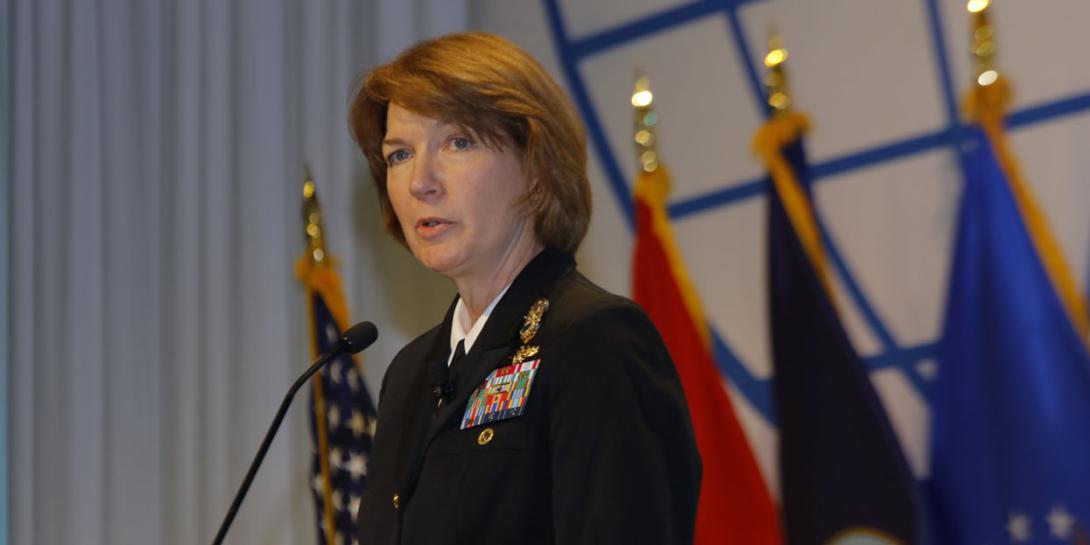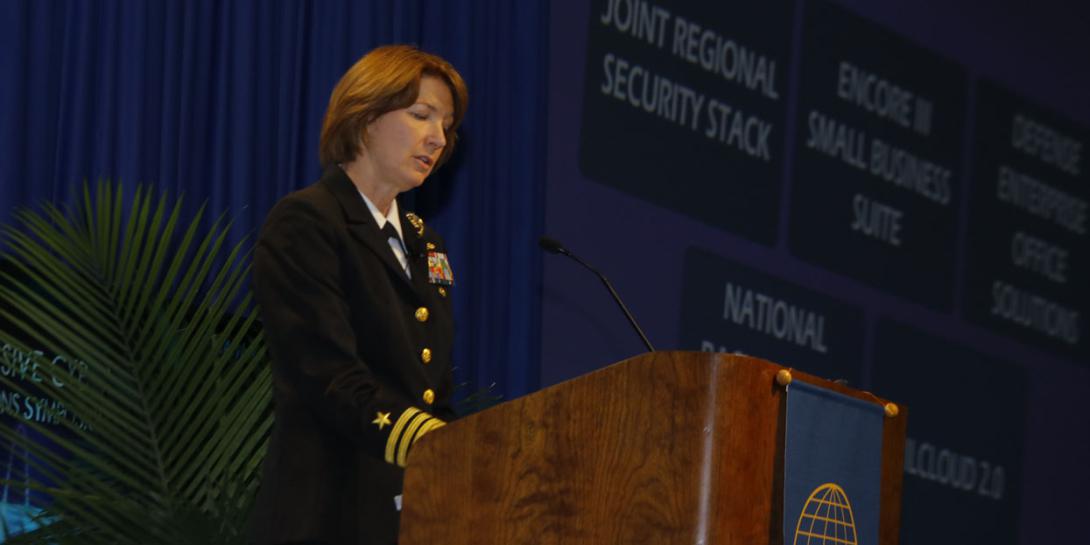DISA Director Provides a 3D Outlook
In her unique, dual-hatted role as director of the Defense Information Systems Agency (DISA) and commander of the Joint Force Headquarters–Department of Defense Information Network (JFHQ-DODIN), Vice Adm. Nancy Norton, USN, is pushing to provide the best communication and information technology capabilities to the Defense Department (DOD).
“Everything we do is to support the warfighter and increase their ability to accomplish their mission,” she said. The admiral was the keynote speaker opening the AFCEA Defensive Cyber Operations Symposium (DCOS) in Baltimore on May 15.
These capabilities include improved mobility, identity management, access controls, blockchain technologies and electromagnetic spectrum, among other technologies. The agency is currently working on prototype devices for establishing assured identity. Adm. Norton said that the first few prototypes will be ready this summer and will be used for determining test parameters. In the fall, DISA will distribute 75 devices for testing.
DISA is developing an alternative to DOD’s common access card, known as CAC, the standard form of identification in the military. Under a pilot program, a prototype will provide authentication decryption and signing operations in the agency’s Microsoft Windows PC environment. “The derived credentials will be unlocked using continuous multifactor authentication on mobile devices,” Adm. Norton shared.
Blockchain capabilities, meanwhile, “represent a framework that will usher in a new era of transparency and interconnectivity among organizations where authority and control is decentralized and decisions are made by consensus,” she stated.
The need for a complete understanding of all of the agency’s electromagnetic spectrum (EMS) activity is another priority identified by the admiral. EMS will be important in agile operations along with the ability for “surgical targeting in population-dense and highly complex environments,” characteristics of the future battlefield. It is a clear warfighting imperative and a key part of the battlespace, Adm. Norton said. The agency will continue to support spectrum research and recommend a portfolio management plan “to enable the development and implementation of innovative spectrum technologies and tools which may reduce DOD's spectrum requirements or improve our ability to share spectrum with the commercial world,” she said.
In addition, Adm. Norton contended that the $7.5 billion, indefinite delivery/indefinite quantity Systems Engineering Technology and Innovation contract, known as SETI, is one example of how the agency is innovating. The agency will also be making the Encore III small business suite awards later in May. “The $350 million dollar multiple award five-year blanket purchase agreement will enable the agency to consolidate its requirements for professional support services into a singular contract that will improve our effectiveness and efficiency,” she said. “And I am very, very proud to say that we have met or exceeded our small business goals for six years in a row. [That is] pretty impressive.”






Comments